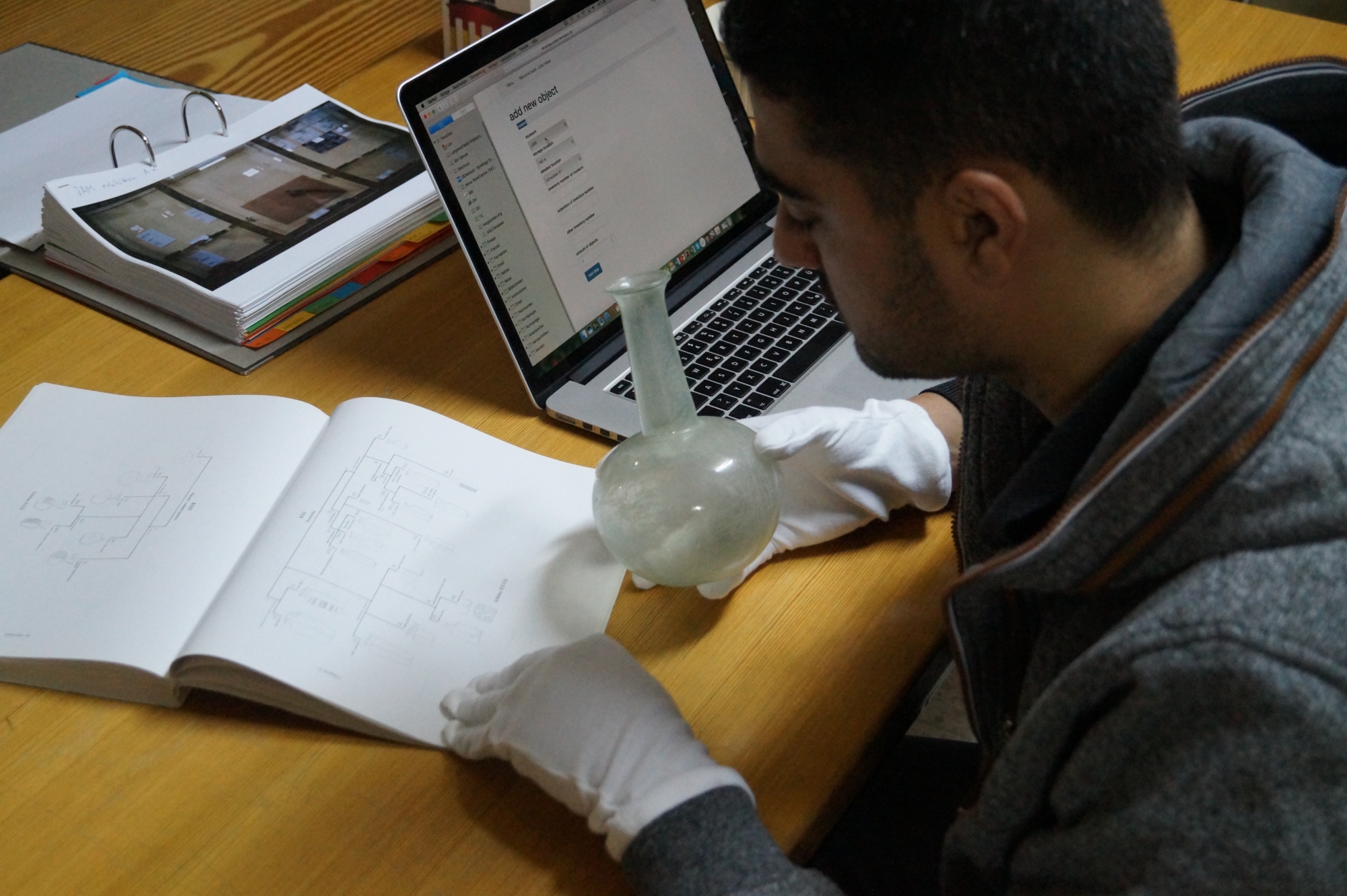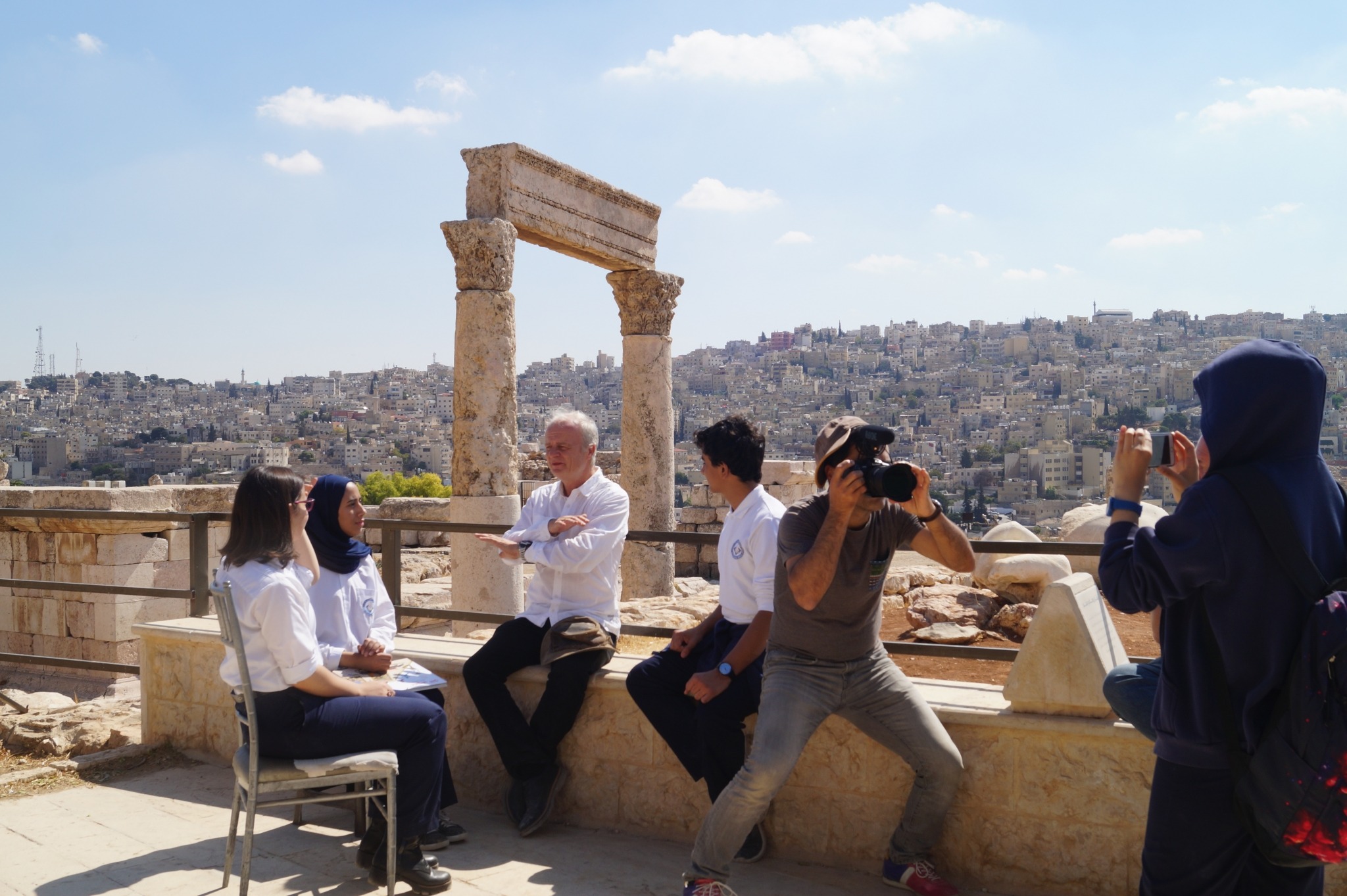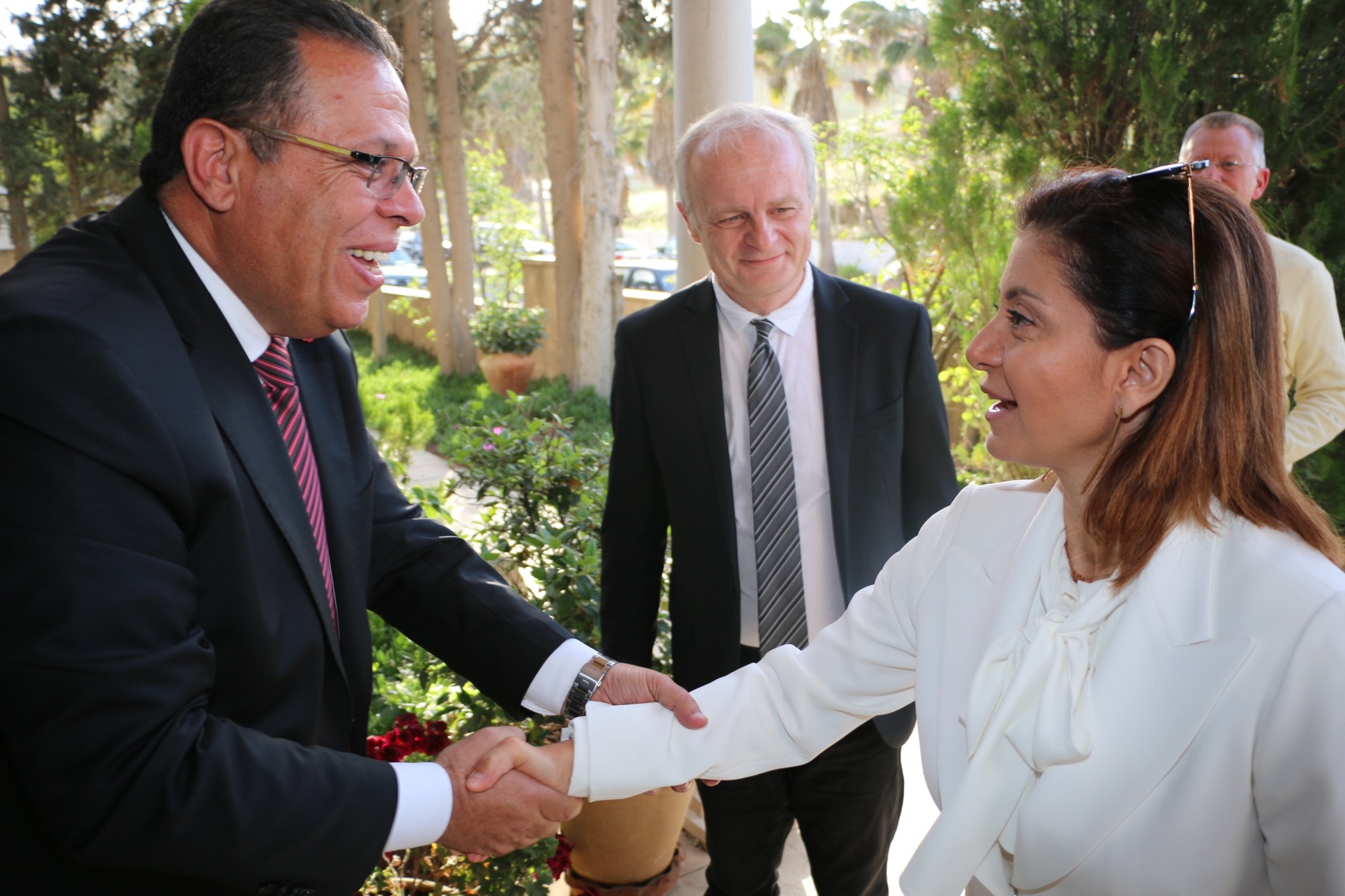Im Januar 2017 startete ein Kooperationsprojekt zwischen dem Deutschen Evangelischen Institut für Altertumswissenschaften des Heiligen Landes (DEIAHL) und dem Department of Antiquities of Jordan (DoA) mit dem Titel „Dokumentation von Objekten in jordanischen archäologischen Museen“ (DOJAM). Dieses wird von der Gerda Henkel Stiftung (GHS) im Rahmen der Förderinitiative „Patrimonies“ finanziert. Im Rahmen dieses Förderprogramms unterstützt die Stiftung Projekte zur Erhaltung des kulturellen Erbes, indem sie wissenschaftliche und technologische Infrastrukturmaßnahmen, die Aus- und Fortbildung von Wissenschaftlern und die Einrichtung von wissenschaftlichen, politischen und gesellschaftlichen Netzwerken finanziert.
Das DEIAHL kann mit seinen Standorten in Jerusalem und Amman auf jahrzehntelange Erfahrungen in der Erforschung und Erhaltung des kulturellen Erbes im Nahen Osten zurückgreifen und bietet damit die notwendigen Voraussetzungen für die Projektdurchführung.
Das Ziel des Projektes besteht in der Erhaltung und Inventarisierung der archäologischen Objekte, die in den Museen Jordaniens lagern oder ausgestellt sind. Dies entspricht dem Strategieplan des Department of Antiquities of Jordan (2014-2018).
In der Ausstellung Amman befinden sich allein etwa 2000 Funde – die Lager umfassen weitere 7000-8000 Objekte. Aufgrund der großen zeitlichen und materiellen Bandbreite ist das Jordan Archaeological Museum als Pilotprojekt besonders geeignet. Hier sind grundsätzlich alle Objektgattung aus allen Epochen vertreten, die auch in den anderen Museen Jordaniens vorkommen.
Mehrere Aufgabenstellungen werden dabei verfolgt:
1. Erstellung einer Datenbank zur Museumsverwaltung und als Forschungsinstrument
2. Foto- und 3D-Dokumentation der archäologischen Objekte des JAM
3. Registrierung und Beschreibung der archäologischen Objekte des JAM
4. Restaurierung ausgewählter archäologischer Objekte
5. Management der Lager und Einrichtung einer Restaurierungswerkstatt
6. Erarbeitung eines Notfallplanes bei Gefährdungen durch Naturkatastrophen und kriegerischen Auseinandersetzungen
7. Training der Mitarbeiter des DoA
Übergabe an die jordanischen Behörden
Mit der Übergabe eines Servers für die Datenbank der Objekte der archäologischen Museen in Jordanien an das Department of Antiquities im Jahr 2023 wurde ein wichtiges Ziel des langjährigen Projektes DOJAM zu Beginn des Jahres erreicht. Die Datenbank war mit finanzieller Förderung der Gerda Henkel Stiftung in einem mehrjährigen Projekt speziell für die Museen unter der Leitung des Department of Antiquities erstellt worden. Dabei diente das Jordan Archaeological Museum auf der Ammaner Zitadelle zunächst als Pilotprojekt. Parallel zur Entwicklung der Datenbank wurden die Lager des Museums aufgearbeitet und neue Regale und Objektkisten angeschafft. Zusätzlich zu den Informationen, die aus bestehenden Inventarlisten, sei es in Form von handschriftlichen Büchern, sei es in Form von Excel- oder Word-Dateien, übernommen werden konnten, wurden die Beschreibungen edurch den Archäologen Dr. Hashem Khries ergänzt und Funde photographiert. Von besonderen Objekten wurden auch 3D-Scans erstellt. Somit sind die Objekte des Museums jetzt sicher aufbewahrt und eindeutig identifizierbar. Alle Informationen sind zentral abrufbar.
Über das Zitadellenmuseum hinaus konnte die Arbeit auf alle weiteren Museen ausgeweitet werden, so dass bis 2025 auch die Objekte der Museen in Madaba, Irbid, Umm Qays und an den neun weiteren Standorten mit insgesamt mehr als 25.000 Objekten in der Datenbank erfasst worden sind. Damit ist der Grundstock der Datenbank entstanden, die dann von den Kuratoren der Museen weiter gepflegt werden kann.
January 2017 saw the launch of a cooperation project between the German Protestant Institute for Antiquities of the Holy Land (DEIAHL) and the Department of Antiquities of Jordan (DoA) entitled “Documentation of Objects in Jordanian Archaeological Museums” (DOJAM). This is funded by the Gerda Henkel Foundation (GHS) as part of the “Patrimonies” funding initiative. As part of this funding program, the foundation supports projects for the preservation of cultural heritage by financing scientific and technological infrastructure measures, the education and training of scientists and the establishment of scientific, political and social networks.
With its locations in Jerusalem and Amman, DEIAHL can draw on decades of experience in the research and preservation of cultural heritage in the Middle East and thus offers the necessary conditions for project implementation.
The aim of the project is to preserve and inventory the archaeological objects stored or exhibited in Jordan’s museums. This is in line with the strategic plan of the Department of Antiquities of Jordan (2014-2018).
The Amman exhibition alone contains around 2000 finds – the storage facilities contain a further 7000-8000 objects. The Jordan Archaeological Museum is particularly suitable as a pilot project due to its wide temporal and material range. In principle, all types of objects from all eras are represented here, which can also be found in other museums in Jordan.
Several tasks have to be achieved:
1. Creation of an archaeological database for the museum-management and scientific research
2. Photo- and 3D-Documentation of the archaeological objects in the JAM
3. Registration and description of the archaeological objects in the JAM
4. Restoration of special archaeological objects
5. Management of storage facilities and equipment of a restoration workshop
6. Establishment of a risk-preparedness plan
7. Training of DoA’s staff
Handover to the Jordanian authorities
With the handover of a server for the database of objects from the archaeological museums in Jordan to the Department of Antiquities in 2023, an important goal of the long-standing DOJAM project was achieved at the beginning of the year. The database was created with financial support from the Gerda Henkel Foundation in a multi-year project specifically for the museums under the direction of the Department of Antiquities. The Jordan Archaeological Museum at the Amman Citadel initially served as a pilot project. Parallel to the development of the database, the museum’s storage facilities were refurbished and new shelves and object boxes were purchased. In addition to the information that could be taken from existing inventory lists, whether in the form of handwritten books, Excel or Word files, the descriptions were supplemented by the archaeologist Dr. Hashem Khries and finds were photographed. 3D scans were also made of special objects. This means that the museum’s objects are now securely stored and clearly identifiable. All information can be accessed centrally.
In addition to the Citadel Museum, the work has been extended to all other museums, so that by 2025 the objects from the museums in Madaba, Irbid, Umm Qays and the nine other locations with a total of more than 25,000 objects will also have been recorded in the database. This will form the basis of the database, which can then be maintained by the curators of the museums.


